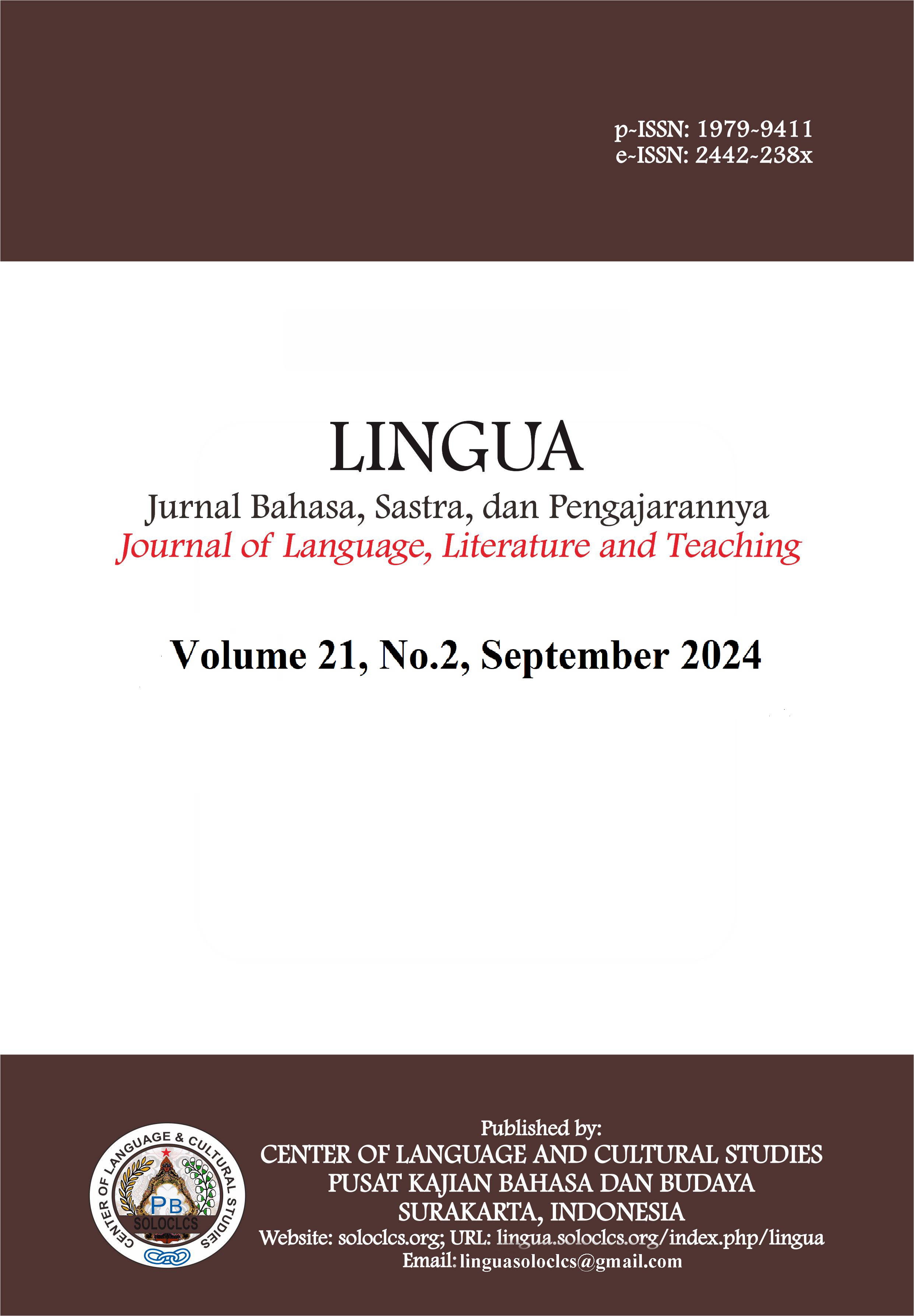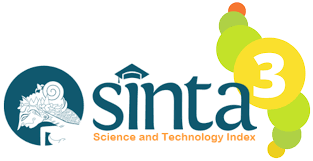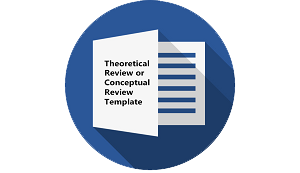From Texting to Tweeting: The Transformation of Written Language in the Digital Era
DOI:
https://doi.org/10.30957/lingua.v21i2.1051Keywords:
written language transformation, social media, digital sociolinguistics, online communication, language changeAbstract
The development of digital technology has brought significant changes in the way humans communicate, especially in written form. This article discusses the transformation of written language from short messages (texting) to the use of social media such as Twitter, which demands a more concise, creative and interactive communication style. Using a sociolinguistic approach, this research explores how technical constraints, such as the number of characters in a post, as well as social dynamics in the digital world, influence the structure and use of language. Research findings show that social media encourages the development of new forms of written language, such as abbreviations, acronyms, the use of emoji’s, and code-switching between languages. Apart from that, the phenomenon of viral in social media also contributes to the spread and normalization of new terms in various linguistic communities. In a broader context, these changes not only impact individual communication patterns but also influence language standards in educational, journalistic and professional domains. The implications of this transformation include the need for a deeper understanding of language adaptation in the digital realm and its impact on people's literacy competencies. Apart from that, this research also highlights the importance of linguistic policies that can balance digital language innovation and preserving standard language rules. Thus, this study provides insight into how the digital era has changed the way humans communicate in writing and how these changes continue to evolve as technology advances.
Downloads
References
Ali, A. R., Siddiqui, M. A., Algunaibet, R., & Ali, H. R. (2023). A Large and Diverse Arabic Corpus for Language Modeling. Procedia Computer Science, 225, 12–21. https://doi.org/10.1016/j.procs.2023.09.086
Carroll, P., Singh, B., & Mangina, E. (2024). Uncovering gender dimensions in energy policy using Natural Language Processing. Renewable and Sustainable Energy Reviews, 193(January), 114281. https://doi.org/10.1016/j.rser.2024.114281
Chauhan, A., Sharma, A., & Mohana, R. (2024). A Pre-Trained Model for Aspect-based Sentiment Analysis Task: using Online Social Networking. Procedia Computer Science, 233, 35–44. https://doi.org/10.1016/j.procs.2024.03.193
Daradkeh, S., Zibin, A., & Al-Badawi, M. (2024). A linguistic analysis of English nativised lexes and their perception by online gamers in Jordan. Ampersand, 13(April), 100182. https://doi.org/10.1016/j.amper.2024.100182
Das, B., Ragothaman, K., Kesari, R. T., & Sudarshan, T. S. B. (2024). The tale of two sides in the 2019 anti-CAA protest—An analytical framework. International Journal of Information Management Data Insights, 4(2), 100300. https://doi.org/10.1016/j.jjimei.2024.100300
Dwivedi, Y. K., Kshetri, N., Hughes, L., Slade, E. L., Jeyaraj, A., Kar, A. K., Baabdullah, A. M., Koohang, A., Raghavan, V., Ahuja, M., Albanna, H., Albashrawi, M. A., Al-Busaidi, A. S., Balakrishnan, J., Barlette, Y., Basu, S., Bose, I., Brooks, L., Buhalis, D., … Wright, R. (2023). “So what if ChatGPT wrote it?” Multidisciplinary perspectives on opportunities, challenges and implications of generative conversational AI for research, practice and policy. International Journal of Information Management, 71(March). https://doi.org/10.1016/j.ijinfomgt.2023.102642
Ihnaini, B., Abuhaija, B., Mills, E. A., & Mahmuddin, M. (2024). Semantic similarity on multimodal data: A comprehensive survey with applications. Journal of King Saud University - Computer and Information Sciences, 36(10), 102263. https://doi.org/10.1016/j.jksuci.2024.102263
Invernici, F., Bernasconi, A., & Ceri, S. (2024). Exploring the evolution of research topics during the COVID-19 pandemic. Expert Systems with Applications, 252(PA), 124028. https://doi.org/10.1016/j.eswa.2024.124028
Kalyan, K. S. (2024). A survey of GPT-3 family large language models including ChatGPT and GPT-4. Natural Language Processing Journal, 6(December 2023), 100048. https://doi.org/10.1016/j.nlp.2023.100048
Kaur, R., Gabrijelčič, D., & Klobučar, T. (2023). Artificial intelligence for cybersecurity: Literature review and future research directions. Information Fusion, 97(March). https://doi.org/10.1016/j.inffus.2023.101804
Khanduja, N., Kumar, N., & Chauhan, A. (2024). Telugu language hate speech detection using deep learning transformer models: Corpus generation and evaluation. Systems and Soft Computing, 6(June), 200112. https://doi.org/10.1016/j.sasc.2024.200112
Kim, Y., & Bruhn, J. (2023). Introduction: Aesthetics of new technological humanities. New Techno Humanities, 3(2), 73–81. https://doi.org/10.1016/j.techum.2024.03.001
Kumar, H. (2024). Virtual worlds, real opportunities: A review of marketing in the metaverse. Acta Psychologica, 250(October 2024), 104517. https://doi.org/10.1016/j.actpsy.2024.104517
Lacárcel, F. J. S., Huete, R., & Zerva, K. (2024). Decoding digital nomad destination decisions through user-generated content. Technological Forecasting and Social Change, 200(August 2023). https://doi.org/10.1016/j.techfore.2023.123098
Luger, J. (2024). ‘Where #freedom and #patriotism live:’ Linking digital media to far-right geographies. Political Geography, 114(January), 103195. https://doi.org/10.1016/j.polgeo.2024.103195
Matrane, Y., Benabbou, F., & Sael, N. (2023). A systematic literature review of Arabic dialect sentiment analysis. Journal of King Saud University - Computer and Information Sciences, 35(6), 101570. https://doi.org/10.1016/j.jksuci.2023.101570
Ravi, K., & Yuan, J. S. (2024). Ideological orientation and extremism detection in online social networking sites: A systematic review. Intelligent Systems with Applications, 24(October), 200456. https://doi.org/10.1016/j.iswa.2024.200456
Reedy, P. (2023). Interpol review of digital evidence for 2019–2022. Forensic Science International: Synergy, 6(January), 100313. https://doi.org/10.1016/j.fsisyn.2022.100313
Rizvanović, B., Zutshi, A., Grilo, A., & Nodehi, T. (2023). Linking the potentials of extended digital marketing impact and start-up growth: Developing a macro-dynamic framework of start-up growth drivers supported by digital marketing. Technological Forecasting and Social Change, 186(February 2022). https://doi.org/10.1016/j.techfore.2022.122128
Subramanian, M., Easwaramoorthy Sathiskumar, V., Deepalakshmi, G., Cho, J., & Manikandan, G. (2023). A survey on hate speech detection and sentiment analysis using machine learning and deep learning models. Alexandria Engineering Journal, 80(August), 110–121. https://doi.org/10.1016/j.aej.2023.08.038
Toprak, A., & Turan, M. (2024). Automated thematic dictionary creation using the web based on WordNet, Spacy, and Simhash. Data and Information Management, October, 100088. https://doi.org/10.1016/j.dim.2024.100088
Wahid, S. H. (2024). Exploring the intersection of Islam and digital technology: A bibliometric analysis. Social Sciences and Humanities Open, 10(March), 101085. https://doi.org/10.1016/j.ssaho.2024.101085
Xu, Q. A., Jayne, C., & Chang, V. (2024). An emoji feature-incorporated multi-view deep learning for explainable sentiment classification of social media reviews. Technological Forecasting and Social Change, 202(March), 123326. https://doi.org/10.1016/j.techfore.2024.123326
Downloads
Published
How to Cite
Issue
Section
License
Authors who publish with this journal agree to the following terms:
- Authors retain copyright and grant the journal right of first publication with the work simultaneously licensed under a Creative Commons Attribution-ShareAlike 4.0 International License that allows others to share the work with an acknowledgement of the work's authorship and initial publication in this journal.
- Authors are able to enter into separate, additional contractual arrangements for the non-exclusive distribution of the journal's published version of the work (e.g., post it to an institutional repository or publish it in a book), with an acknowledgement of its initial publication in this journal.
- Authors are permitted and encouraged to post their work online (e.g., in institutional repositories or on their website) prior to and during the submission process, as it can lead to productive exchanges, as well as earlier and greater citation of published work (See The Effect of Open Access).















